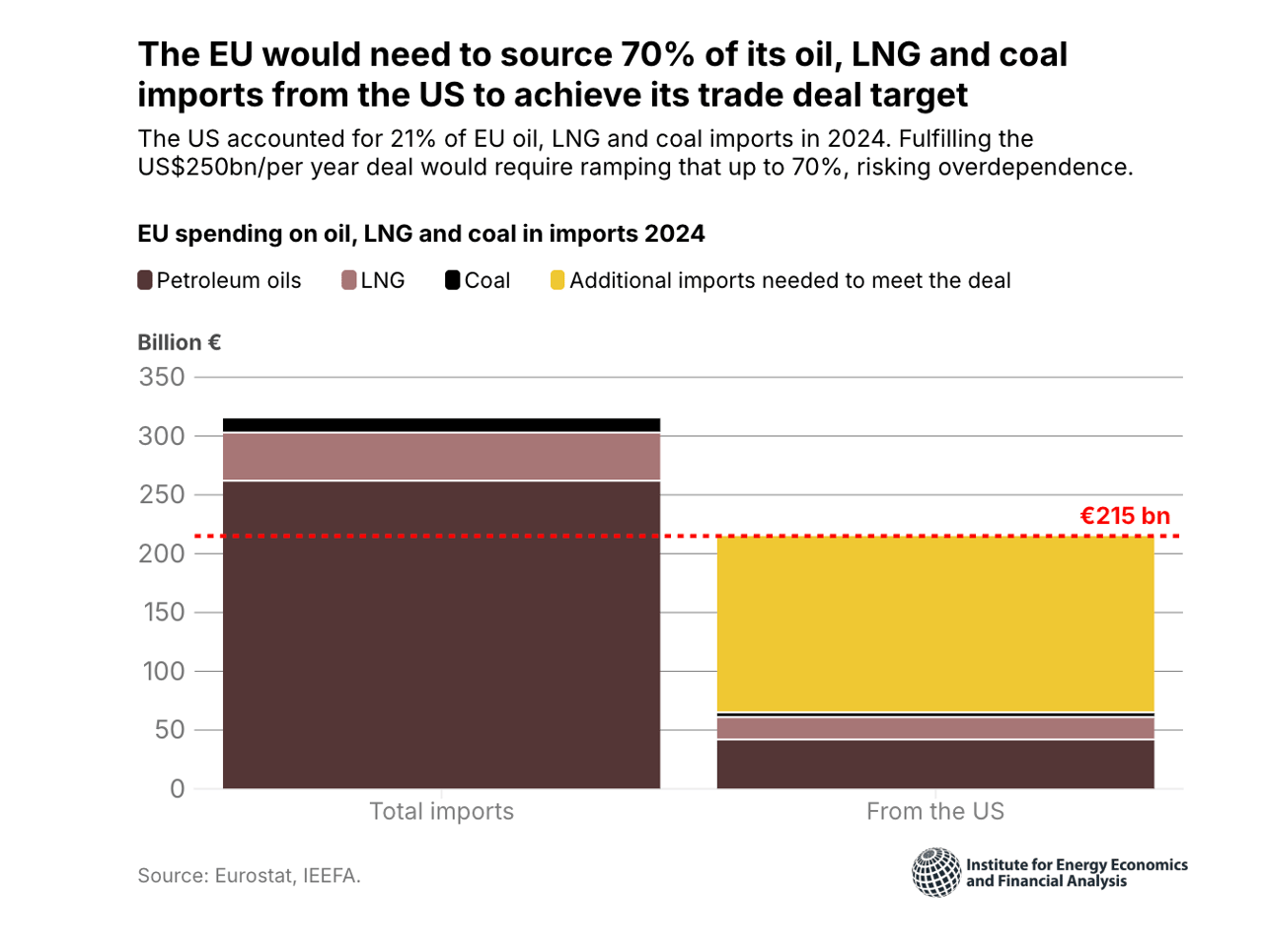EU tariff deal to buy US energy 'not credible' and 'implausible', critics say
Under the tariffs agreement with the US announced earlier this week, the European Union committed to purchasing $750bn [€650bn] worth of US liquified natural gas (LNG) and nuclear fuel over three years — a move critics say is unrealistic and threatens Europe’s green transition.
“We will replace Russian gas and oil with significant purchases of US LNG, oil and nuclear fuels,” said EU Commission president Ursula von der Leyen, alongside US president Donald Trump, during a press point announcing a deal that will see 15 percent tariffs on most EU exports to the US.
US energy products, she said, would help to diversify its sources of supply and contribute to Europe's energy security.
But experts and green groups have argued the opposite.
In an analysis published on Wednesday (30 July), the US-based think tank Institute for Energy Economics and Financial Analysis (IEEFA) said the deal is “unachievable,” citing Europe’s declining gas demand and the market’s limited ability to absorb excess volumes.
It also warned of “overreliance” on US energy, arguing that the EU would have to triple its imports of US oil, coal, and LNG in 2025 to meet the target based on 2024 prices and current import ratios.
The EU imported €315bn of oil, coal, and LNG in 2024, with just €65bn (about 21 percent) coming from the US, according to IEEFA. Most of that was oil (€42bn), followed by LNG (€19bn) and coal (€4bn)
To meet a proposed target of buying €215bn in US energy annually, the EU would need to source around 70 percent of its fossil fuel imports from the US.
“The deal effectively ties the bloc's energy supply to a single seller,” IEEFA analyst Ana Maria Jaller-Makarewicz wrote in the report.

Instead of locking in more US fossil-fuel imports, analysts say the EU should invest in renewables — an approach that aligns with its climate goals and international obligations.
IEEFA estimates that an investment of $750bn in renewables could add 321 GW of solar, 151 GW of offshore wind, and 74 GW of onshore wind capacity to the EU’s energy mix, boosting the bloc’s total solar and wind capacity by nearly 90 percent.
Meanwhile, environmental groups have also sounded the alarm, arguing that the deal is incompatible with Europe’s 2030 climate targets.
“The claim that these volumes of US energy imports will substitute for Russian imports is not credible,” said the European Environmental Bureau (EEB), a network of environmental NGOs.
The EEB points out that the US already provides half of the EU’s LNG and that replacing all the rest of the LNG the EU gets from Russia (around 17 percent) with US supplies would cost only about €9bn more each year.
“Tripling US energy imports in just three years isn’t only physically implausible, it would derail the EU’s mid-term decarbonisation targets,” said Luke Haywood from the EEB.
Green MEP Bas Eickhout also said that this deal puts Europe’s green transition at risk.
“[With this deal] the EU will be contributing to developing the US’ fossil fuel-based economic model, in a huge boost for Trumpian politics and a massive hit to the climate,” he said.
This year, we turn 25 and are looking for 2,500 new supporting members to take their stake in EU democracy. A functioning EU relies on a well-informed public – you.
Author Bio
Elena is EUobserver's editor-in-chief. She is from Spain and has studied journalism and new media in Spanish and Belgian universities. Previously she worked on European affairs at VoteWatch Europe and the Spanish news agency EFE.
Related articles
Tags
Author Bio
Elena is EUobserver's editor-in-chief. She is from Spain and has studied journalism and new media in Spanish and Belgian universities. Previously she worked on European affairs at VoteWatch Europe and the Spanish news agency EFE.